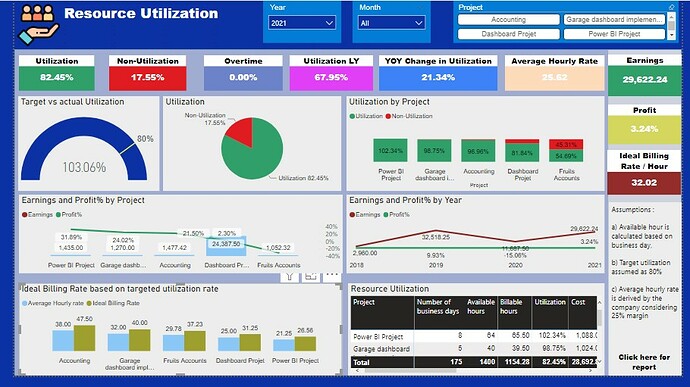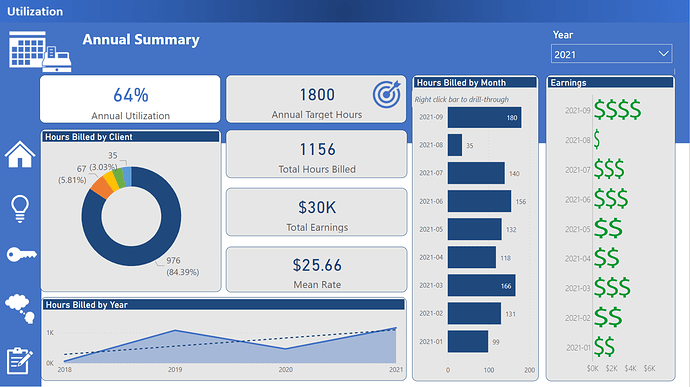Hello Everyone,
I trust that you are all keeping well. The weeks seem to be absolutely flying!
Here we are again for another instalment of the Enterprise DNA challenge.
With every passing challenge the standards and the art of possible within power BI are stretched. We are genuinely seeing entries that are at the forefront of power bi development.
Some of the techniques on display are just incredible and there is just so much to learn from each and every entry that came in.
The write ups, the idea sharing, tips, tricks make the challenge what it is and its genuinely amazing to see the support the community lends and wants to help each other improve.
Be sure to check out the previous challenge entries here.
If you want to learn more about the challenge, then please see the link below.
As always any questions, issues, suggestions or comments please get in touch.
The Brief
How many productive hours do you work in a week? 20 maybe 30
How many should you be doing?
How many hours am I doing on a particular project?
As you will all know for many businesses and consultants these are key questions they ask when they are selling or tracking their time.
How effective is the resource? how is it performing?
Utilisation.
This weeks challenge is all about helping answer all these questions and take a deep dive into the world of utilisation and timesheet data.
The data is not overly complex and contains what would be expected columns in any time tracking solution so could easily be extended to your own work.
The data has been taken from a consultant in the field with some of the values anonymised to protect confidentiality.
Making it perfect practice for what you are likely to face in the real world.
We want to make these challenges accessible to everyone, so I am also attaching an existing PBIX with the data so that nobody is starting from zero.
The PBIX contains a comprehensive report that we should definitely review before diving into this challenge.
This challenge is all about what you can interpret from this data. What information is being overlooked. What should we be focussing on?
The aim of this challenge isn’t to be prescriptive at all. Hopefully the dataset is simple enough that it will allow us all to present our own individual analysis on the subject.
I am also attaching below a couple of links to help with research and understanding and some KPI ideas.
https://www.metric.ai/metricopedia/utilization
Submission Categories
Winning Enterprise DNA member- Only open to current Enterprise DNA members
First Time Participant winner- open to any Enterprise DNA member who is taking part in the challenge for the first time.
Winning Non-member- Open to everyone
Most Creative Entry- Open to everyone
There are some excellent prizes on offer from free membership and goodies to having your work showcased across the enterprise platform. So please do get involved and share this opportunity with others.
If you are not already following Enterprise DNA on LinkedIn please do so. There will be some great opportunities posted via LinkedIn during the challenge.
How to submit:
- Email the complete PBIX file to powerbichallenge@enterprisedna.co
- Take an image and URL of your report and post it to the Enterprise DNA forum
- Take the image and URL and post it LinkedIn tagging Enterprise DNA saying I accepted the challenge.
- We always encourage all participants to do a writeup and share their experience of participating in the challenge and sharing it on the forum and on social media.
IF YOU NEED ANY HELP WITH PUBLISHING, PLEASE REACHOUT TO ONE OF THE TEAM WE CAN HELP.
Hopefully with this challenge there is something for everyone to work on. Whether you want to focus on visulisation or the data calculation side the choice is yours.
The submission date for this challenge is Sunday, 3rd October 2021
As always, best of luck!
Any issues or questions do not hesitate to get in touch with myself or the team.
Take care and speak soon.
Haroon
Enterprise DNA
Challenge 16.zip (199.4 KB)



